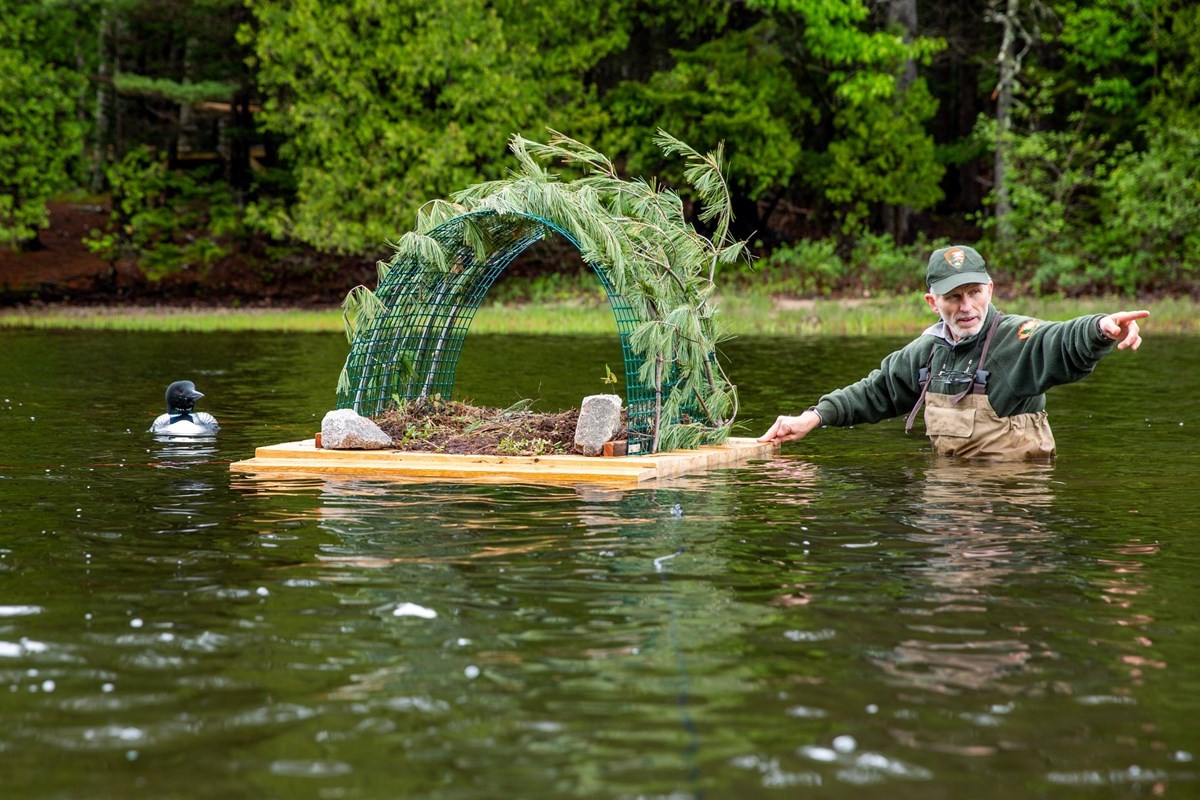Last updated: October 2, 2020
Article
Nesting Loons at Acadia

Emma Forthofer/FOA
Nesting Habits and Concerns
Every year common loons return to Acadia's many ponds and lakes to feast on abundant food sources and rear their young. During mating season, loons remain alert and territorial. Successful pairs can lay between 1-3 eggs and both the male and the female play an active part in the incubation. Chicks will enter the water on their first day of birth, but as those muscles are developing for 1-2 weeks the parents will carry the chicks on their backs.
Loons chose areas that are private and well hidden, like small coves, to protect their nest from predators. Because loons do not walk well on land they make they nest right at the water's edge, creating a nest "cup." Although this makes entering the water quick and easy when a breeding loon needs a snack or shelter, this can also cause conflicts with another animals who inhabit waterfront access: humans.
A loons nest can often be vulnerable to disturbance by humans in places where we like to swim, kayak or boat, and hike, which can result in a loon pair abandoning their nest. Approaching nests can cause loons to flush, which could knock eggs into the water, or leave eggs unprotected. Loons can also abandon nests entirely, causing them to dive, leaving chicks unattended. Sadly, loon chicks in Maine have lower survival rates than neighboring states in the northeast.

Will Greene? FOA
Floating Nest Rafts
For the past several years, loons have attempted to nest near Echo Lake Beach, a popular swimming beach in the park. Acadia and our partners at the Somes-Meynell Wildlife Sanctuary are adapting to the increase in water front development in order to preserve loon nesting sites.
Somes Meynell Sanctuary and park biologists introduced a covered raft for the loon pair to use in an area that has been closed off to public access with buoys. The raft is designed to appear like a marsh platform with protection on three sides to discourage predators. Floating nest rafts are used to create safer nesting habitat, helping eggs hatch successfully.

Ashley L. Conti/ FOA
What You Can Do to Help
We need your help to protect loons and their nests. With your help we may see more loons successfully nest, hatch, and fledge in Acadia.
• Enjoy loons from a respectful distance; at least 50 feet (15.24 m).
• Please limit noise, activity, and observation time.
• Never approach a nest raft or natural raft, even if they look empty.
• Use binoculars to view loons.
• Always keep your pets on a leash in loon habitat.
